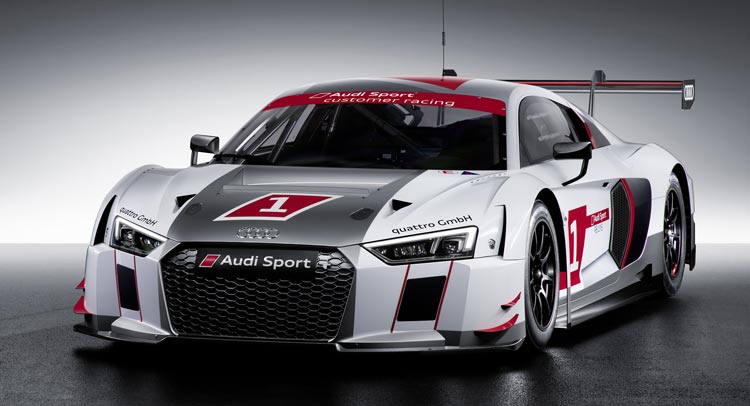Since Audi released an all-new R8 production car, it was only natural that the racing version got updated as well. Meet the Audi R8 LMS, a race car that already meets the new GT3 regulations to be introduced in 2016.
Lighter and safer than before, the new R8 LMS features more race car technology and improved aerodynamics. Developed and built by Quattro GmbH, the new Audi R8 LMS is 25 kg lighter than its predecessor, despite additional weight resulting from safety features.
Audi says the new Audi R8 LMS surpasses the safety requirements of the GT3 regulations to be introduced in 2016 thanks to a modified structure of the front end and a CFRP crash element at the rear that is being used for the first time in a GT3 race car. As a matter of fact, the R8 LMS meets the crash test requirements that apply to the much lighter Le Mans prototypes (LMP) such as the Audi R18 e-tron quattro.
Tipping the scales at 1,225 kg, the car features an intelligent material mix of aluminum in the Audi Space Frame (ASF), a structural CFRP component and a steel roll cage, all of which make the chassis about 30 kg lighter. At the same time, the torsional stiffness of the stressed frame has increased by 39 percent.
Power comes from a modified version of the 5.2-liter V10 engine from the production car which produces 585PS (577hp) and is mated to a completely new six-speed sequential transmission with paddle shifters.
In terms of aerodynamics, the new Audi R8 LMS gets a fully lined underfloor and a conceptually integrated rear diffusor, which allows for the reduction of the dimensions of the rear wing. The wheel wells, which are open rearwards via a larger cross-section, contribute to improved airflow as well. Audi says the airflow rate and cooling area of the radiator at the front have increased by 10 percent to handle maximum outside air temperatures.
The new model will have its racing debut at the 24-hour races at the Nürburgring (May 16-17) and at Spa (July 25-26). Quattro GmbH will begin taking customer orders in the second half of the year, with first deliveries expected by the end of 2015.












